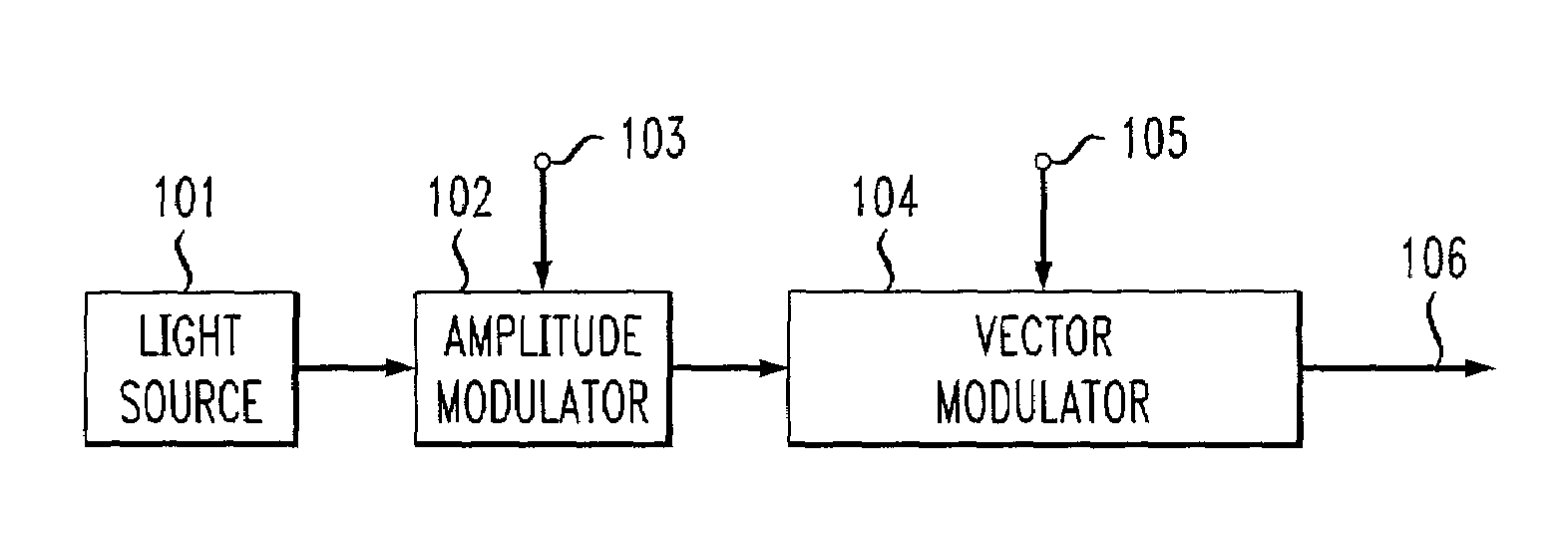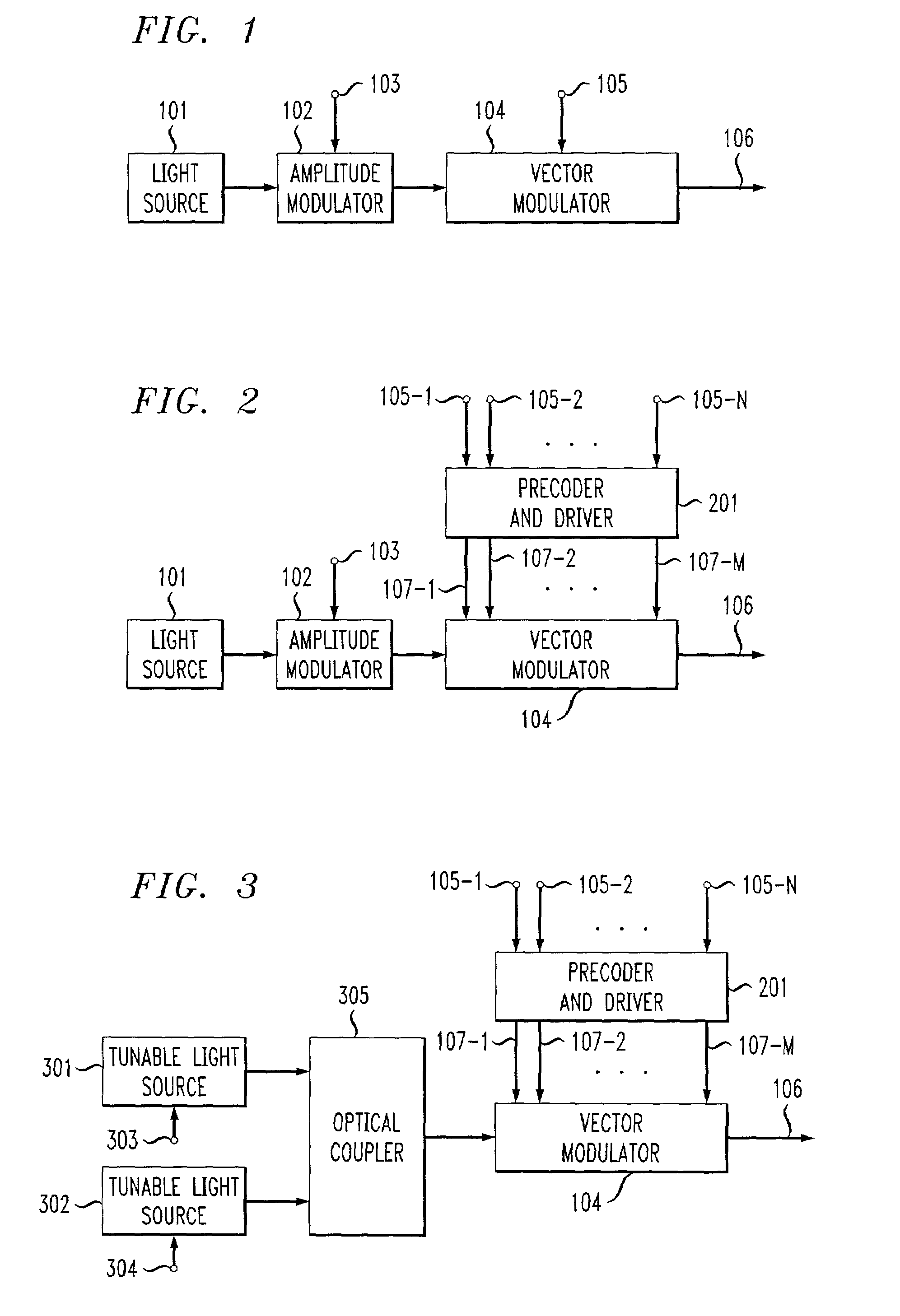Analog modulation of optical signals
- Summary
- Abstract
- Description
- Claims
- Application Information
AI Technical Summary
Problems solved by technology
Method used
Image
Examples
second embodiment
[0018]FIG. 2 also shows, in simplified block diagram form, the invention. The embodiment of FIG. 2 is similar to that of FIG. 1 and includes similar elements that are essentially identical from both a physical and functional standpoint. These similar elements have been similarly numbers as those in FIG. 1 and will not be discussed again in detail. The only significant difference between the embodiments of FIG. 1 and FIG. 2 is the use of Precoder and Driver 201. As can be seen, one or more data signals are supplied to precoder and driver 201 via input connections 105-1 through 105-N. In precoder and driver 201, the data signals are employed to code and generate voltage signals for driving, phase modulators in vector modulator 104. These voltage signals are supplied via output connections 107-1 through 107-M to vector modulator 104. Again, details and operation of vector modulator 104 are described below regarding FIGS. 4 and 5 and a simple example of operation of precoder and driver ...
third embodiment
[0019]FIG. 3 illustrates, in simplified block diagram form, the invention. The embodiment of FIG. 3 is similar to that of FIG. 2 and includes similar elements that are essentially identical from both a physical and functional standpoint. These similar elements have been similarly numbers as those in FIG. 2 and will not be discussed again in detail. The only significant difference between the embodiments of FIG. 2 and FIG. 3 is how the sub-carrier modulated optical signal is generated in the embodiment of FIG. 3. As indicated above, there are several ways of generating the desired sub-carrier modulated optical signal upon which the data signal will eventually be modulated. In the embodiment of FIG. 3, a coherent technique is advantageously employed to realize the desired sub-carrier modulated optical signal. Specifically, in this example, two carrier optical signals are generated by employing tunable laser light sources 301 and 302. Signals for controlling the frequency (wavelength) ...
PUM
 Login to View More
Login to View More Abstract
Description
Claims
Application Information
 Login to View More
Login to View More - R&D
- Intellectual Property
- Life Sciences
- Materials
- Tech Scout
- Unparalleled Data Quality
- Higher Quality Content
- 60% Fewer Hallucinations
Browse by: Latest US Patents, China's latest patents, Technical Efficacy Thesaurus, Application Domain, Technology Topic, Popular Technical Reports.
© 2025 PatSnap. All rights reserved.Legal|Privacy policy|Modern Slavery Act Transparency Statement|Sitemap|About US| Contact US: help@patsnap.com



